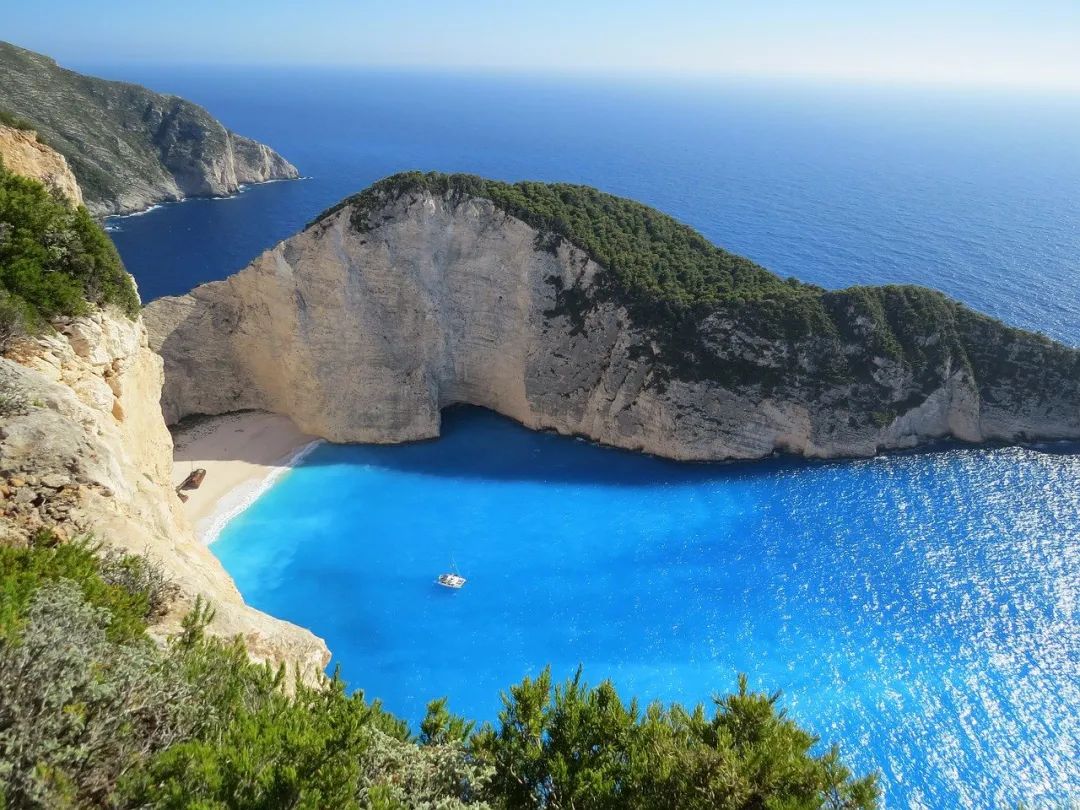雅思阅读模拟题:The Spectacular Eruption of Mount St. Helens

下面雅思为大家整理了一篇雅思阅读模拟题,这篇文章的主要内容是讨论了Mount St. Helens的火山喷发的时候的壮观景象。Mt St. Helens是位于美国西北角Oregon和Washington交接的一座活火山,爆发的景象让人叹为观止。
A The eruption in May 1980 of Mount St. Helens, Washington State, astounded the world with its violence. A gigantic explosion tore much of the volcanos summit to fragments; the energy released was equal to that of 500 of the nuclear bombs that destroyed Hiroshima in 1945.
B The event occurred along the boundary of two of the moving plates that make up the Earths crust. They meet at the junction of the North American continent and the Pacific Ocean. One edge of the continental North American plate over-rides the oceanic Juan de Fuca micro-plate, producing the volcanic Cascade range that includes Mounts Baker, Rainier and Hood, and Lassen Peak as well as Mount St. Helens.
C Until Mount St. Helens began to stir, only Mount Baker and Lassen Peak had shown signs of life during the 20th century. According to geological evidence found by the United States Geological Survey, there had been two major eruptions of Mount St. Helens in the recentpast: around 1900 B.C., and about A.D. 1500. Since the arrival of Europeans in the region, it had experienced a single period of spasmodic activity, between 1831 and 1857. Then, for more than a century, Mount St. Helens lay dormant.
D By 1979, the Geological Survey, alerted by signs of renewed activity, had been monitoring the volcano for 18 months. It warned the local population against being deceived by the mountains outward calm, and forecast that an eruption would take place before the end of the century. The inhabitants of the area did not have to wait that long. On March 27, 1980,a few clouds of smoke formed above the summit , and slight tremors were felt. On the 28th, larger and darker clouds,. consisting of gas and ashes,. emerged and climbed as high as 20,000 feet. In April a slight lull ensued, but the volcanologists remained pessimistic. The, in early May, the northern flank of the mountain bulged, and the summit rose by 500 feet.
E Steps were taken to evacuate the population. Most- campers, hikers, timbercuttersleft the slopes of the mountain. Eighty-four-year-old Harry Truman, a holiday lodge owner who had lived there for more than 50 years, refused to be evacuated, in spite of official and public, including an entire class of school children, wrote to him, begging him to leave. He never did.
F On May 18, at 8.32 in the morning, Mount St. Helens blew its top. literally. Suddenly, it was 1300 feet shorter than it had been before its growth had begun. Over half a cubic mile of rock had disintegrated . At the same moment, an earthquake with an intensity of 5 on the Richter scale was recorded. It triggered an avalanche of snow and ice. mixed with hot rock-the entire north face of the mountain had fallen away. A wave of scorching volcanic gas and rock fragments shot horizontally from the volcanos riven flank, at an inescapable 200 miles per hour. As the sliding ice and snow melted, it touched off devastating torrents of mud and debris, which destroyed all life in their path. Pulverised, which destroyed all life in their path. Pulverised rock climbed as a dust cloud into the atmosphere. Finally, viscous lava, accompanied by burning clouds of ash and gas, welled out of volcanos new crater, and from lesser vents and cracks in its flanks.
G Afterwards, scientists were able to analyse the sequence of events. First, magmamolten rock-at temperatures above 2000oF. had surged into the volcano from the Earths mantle. The build-up was accompanied by an accumulation of gas, which increased as the mass of magma grew. It was the pressure inside the mountain that made it swell. Next, the rise in gas pressure caused a violent decompression. Which ejected the shattered summit like a cork from a shaken soda bottle. With the summit gone, the molten rock within was released in a jet of gas and fragmented magma, and lava welled from the crater.
H The effects of the Mount St. Helens eruption were catastrophic. Almost all the trees of the surrounding forest, mainly Douglas firs. were flattened. and their branches and bark ripped off by the shock wave of the explosion. Ash and mud spread over nearly 200 square miles of country. All the towns and settlements in the area were smothered in an even coating of ash. Volcanic ash silted up the Columbia River 35 miles away, reducing the debris that accumulated at the foot of the volcano reached a depth. in places, of 200 feet.
I The eruption of Mount St. Helens was one of the most closely observed and analysed in history. Because geologists had been expecting the event, they were able to amass vast amounts of technical data when it happened. Study of atmospheric particles formed as a result of the explosion showed that droplets of sulphuric acid, acting as a screen between the Sun and the Earths surface, caused a distinct drop in temperature. There is no doubt that the activity of Mount St. Helens and other volcanoes since 1980 has influenced our climate . Even so, it has been calculated that the quantity of dust ejected by Mount St. Helens - a quarter of a cubic mile- was negligible in comparison with that thrown out by earlier eruptions, such as that of Mount Katmai in Alaska in 1912 . The volcano is still active. Lava domes have formed inside the new crater, and have periodically burst. The threat of Mount St Helens lives on.
.Questions 1 and 2
Reading Passage 1 has 9 paragraphs labelled A-I
Answer questions 1 and 2 by writing the appropriate letter A-I inboxes 1 and 2 on your answer sheet.
Example Answer
Which paragraph compares the eruption to the energy A released by nuclear bomb?
1. Which paragraph describes the evacuation of the mountain?
2. Which paragraph describes the moment of the explosion of Mount St. Helens?
Questions 3 and 4
3. What are the dates of the TWO major eruptions of Mount St. Helens before 1980?
Write TWO dates in box 3 on your answer sheet.
4 How do scientists know that the volcano exploded around the two dates above?
Using NO MORE THAN THREE WORDS , write your answer in box 4 on your answer sheet
Questions 5-8
Complete the summary of events below leading up to the eruption of Mount St. Helens. Choose NO MORE THAN THREE WORDS from the passage for each answer.
Write your answers in boxes 5-8 on your answer sheet.
In 1979 the Geological Survey warned ... ... to expect a violent eruption before the end of the century. The forecast was soon proved accurate. At the end of March there were tremors and clouds formed above the mountain. This was followed by a lull, but in early May the top of the mountain rose by ... ... . People were ... ... from around the mountain. Finally, on May 18th at ... ..., Mount St. Helens exploded.
Question 9 and 10
Complete the table below giving evidence for the power of the Mount St. Helens eruption.
Write your answers in boxes 9 and 10 on your answer sheet.
Item Equivalent to
Example
The energy released by the explosion of
Mount St. Helens
Answer
500 nuclear bombs
The area of land covered in mud or ash ......
The quantity of dust ejected ......
Question 11
Choose the appropriate letter A-D and write it in box 11 one your answer sheet.
11. According to the text the eruption of Mount St. Helens and other volcanoes has influenced our climate by ...
A increasing the amount of rainfall. B heating the atmosphere.
C cooling the air temperature. D causing atmospheric storms.
下面雅思为大家整理了一篇雅思阅读模拟题,这篇文章的主要内容是讨论了Mount St. Helens的火山喷发的时候的壮观景象。Mt St. Helens是位于美国西北角Oregon和Washington交接的一座活火山,爆发的景象让人叹为观止。
A The eruption in May 1980 of Mount St. Helens, Washington State, astounded the world with its violence. A gigantic explosion tore much of the volcanos summit to fragments; the energy released was equal to that of 500 of the nuclear bombs that destroyed Hiroshima in 1945.
B The event occurred along the boundary of two of the moving plates that make up the Earths crust. They meet at the junction of the North American continent and the Pacific Ocean. One edge of the continental North American plate over-rides the oceanic Juan de Fuca micro-plate, producing the volcanic Cascade range that includes Mounts Baker, Rainier and Hood, and Lassen Peak as well as Mount St. Helens.
C Until Mount St. Helens began to stir, only Mount Baker and Lassen Peak had shown signs of life during the 20th century. According to geological evidence found by the United States Geological Survey, there had been two major eruptions of Mount St. Helens in the recentpast: around 1900 B.C., and about A.D. 1500. Since the arrival of Europeans in the region, it had experienced a single period of spasmodic activity, between 1831 and 1857. Then, for more than a century, Mount St. Helens lay dormant.
D By 1979, the Geological Survey, alerted by signs of renewed activity, had been monitoring the volcano for 18 months. It warned the local population against being deceived by the mountains outward calm, and forecast that an eruption would take place before the end of the century. The inhabitants of the area did not have to wait that long. On March 27, 1980,a few clouds of smoke formed above the summit , and slight tremors were felt. On the 28th, larger and darker clouds,. consisting of gas and ashes,. emerged and climbed as high as 20,000 feet. In April a slight lull ensued, but the volcanologists remained pessimistic. The, in early May, the northern flank of the mountain bulged, and the summit rose by 500 feet.
E Steps were taken to evacuate the population. Most- campers, hikers, timbercuttersleft the slopes of the mountain. Eighty-four-year-old Harry Truman, a holiday lodge owner who had lived there for more than 50 years, refused to be evacuated, in spite of official and public, including an entire class of school children, wrote to him, begging him to leave. He never did.
F On May 18, at 8.32 in the morning, Mount St. Helens blew its top. literally. Suddenly, it was 1300 feet shorter than it had been before its growth had begun. Over half a cubic mile of rock had disintegrated . At the same moment, an earthquake with an intensity of 5 on the Richter scale was recorded. It triggered an avalanche of snow and ice. mixed with hot rock-the entire north face of the mountain had fallen away. A wave of scorching volcanic gas and rock fragments shot horizontally from the volcanos riven flank, at an inescapable 200 miles per hour. As the sliding ice and snow melted, it touched off devastating torrents of mud and debris, which destroyed all life in their path. Pulverised, which destroyed all life in their path. Pulverised rock climbed as a dust cloud into the atmosphere. Finally, viscous lava, accompanied by burning clouds of ash and gas, welled out of volcanos new crater, and from lesser vents and cracks in its flanks.
G Afterwards, scientists were able to analyse the sequence of events. First, magmamolten rock-at temperatures above 2000oF. had surged into the volcano from the Earths mantle. The build-up was accompanied by an accumulation of gas, which increased as the mass of magma grew. It was the pressure inside the mountain that made it swell. Next, the rise in gas pressure caused a violent decompression. Which ejected the shattered summit like a cork from a shaken soda bottle. With the summit gone, the molten rock within was released in a jet of gas and fragmented magma, and lava welled from the crater.
H The effects of the Mount St. Helens eruption were catastrophic. Almost all the trees of the surrounding forest, mainly Douglas firs. were flattened. and their branches and bark ripped off by the shock wave of the explosion. Ash and mud spread over nearly 200 square miles of country. All the towns and settlements in the area were smothered in an even coating of ash. Volcanic ash silted up the Columbia River 35 miles away, reducing the debris that accumulated at the foot of the volcano reached a depth. in places, of 200 feet.
I The eruption of Mount St. Helens was one of the most closely observed and analysed in history. Because geologists had been expecting the event, they were able to amass vast amounts of technical data when it happened. Study of atmospheric particles formed as a result of the explosion showed that droplets of sulphuric acid, acting as a screen between the Sun and the Earths surface, caused a distinct drop in temperature. There is no doubt that the activity of Mount St. Helens and other volcanoes since 1980 has influenced our climate . Even so, it has been calculated that the quantity of dust ejected by Mount St. Helens - a quarter of a cubic mile- was negligible in comparison with that thrown out by earlier eruptions, such as that of Mount Katmai in Alaska in 1912 . The volcano is still active. Lava domes have formed inside the new crater, and have periodically burst. The threat of Mount St Helens lives on.
.Questions 1 and 2
Reading Passage 1 has 9 paragraphs labelled A-I
Answer questions 1 and 2 by writing the appropriate letter A-I inboxes 1 and 2 on your answer sheet.
Example Answer
Which paragraph compares the eruption to the energy A released by nuclear bomb?
1. Which paragraph describes the evacuation of the mountain?
2. Which paragraph describes the moment of the explosion of Mount St. Helens?
Questions 3 and 4
3. What are the dates of the TWO major eruptions of Mount St. Helens before 1980?
Write TWO dates in box 3 on your answer sheet.
4 How do scientists know that the volcano exploded around the two dates above?
Using NO MORE THAN THREE WORDS , write your answer in box 4 on your answer sheet
Questions 5-8
Complete the summary of events below leading up to the eruption of Mount St. Helens. Choose NO MORE THAN THREE WORDS from the passage for each answer.
Write your answers in boxes 5-8 on your answer sheet.
In 1979 the Geological Survey warned ... ... to expect a violent eruption before the end of the century. The forecast was soon proved accurate. At the end of March there were tremors and clouds formed above the mountain. This was followed by a lull, but in early May the top of the mountain rose by ... ... . People were ... ... from around the mountain. Finally, on May 18th at ... ..., Mount St. Helens exploded.
Question 9 and 10
Complete the table below giving evidence for the power of the Mount St. Helens eruption.
Write your answers in boxes 9 and 10 on your answer sheet.
Item Equivalent to
Example
The energy released by the explosion of
Mount St. Helens
Answer
500 nuclear bombs
The area of land covered in mud or ash ......
The quantity of dust ejected ......
Question 11
Choose the appropriate letter A-D and write it in box 11 one your answer sheet.
11. According to the text the eruption of Mount St. Helens and other volcanoes has influenced our climate by ...
A increasing the amount of rainfall. B heating the atmosphere.
C cooling the air temperature. D causing atmospheric storms.









